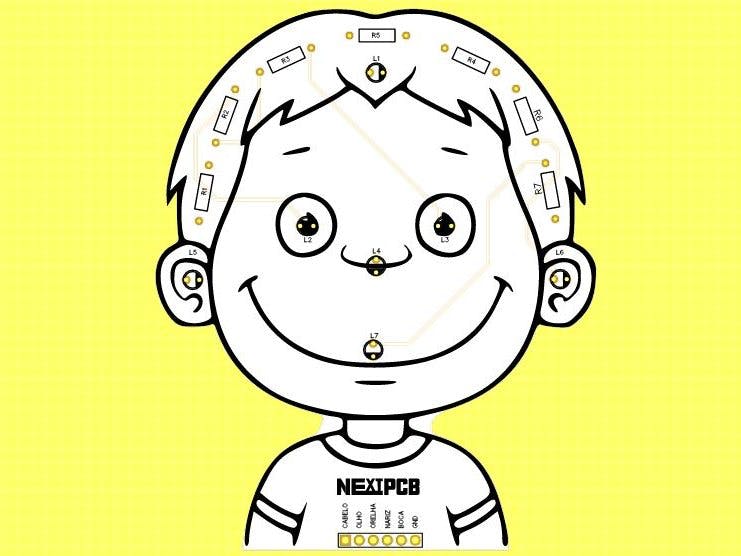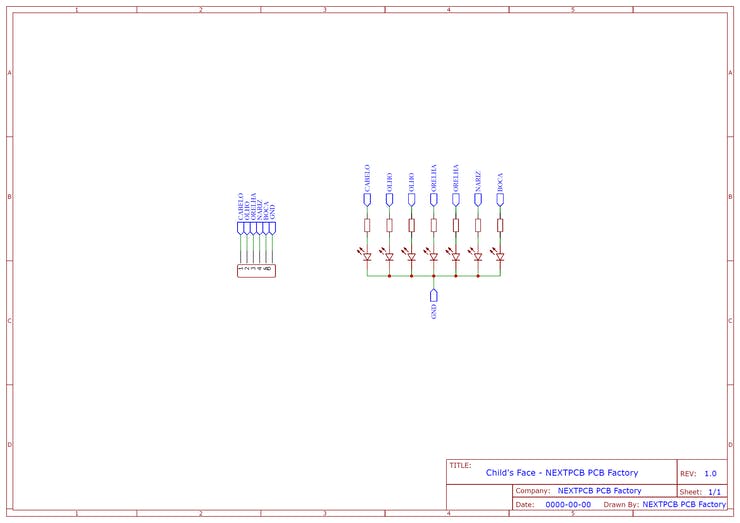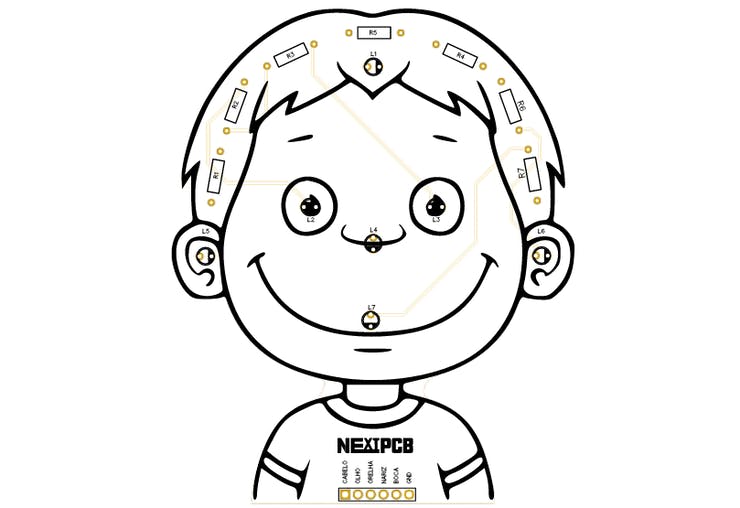Learn how to create a module for Arduino and teach the regions of the human face to your child or student.
Do you have children or are you a classroom teacher? How many times have you thought about teaching your children or students in a fun, playful, and easy way?
Many parents and teachers use traditional teaching methods because they do not want to innovate or do not want to leave their comfort zone. Therefore, it is necessary to advance and see education with different eyes.
Education needs to be something fun and that allows the student to be engaged with the class.
But, after all, how to engage students and make the class fun and playful?
Imagine the following situation. Pay attention to that!
Imagine that you are a teacher and want to teach students the principal parts of the head. The parts are mouth, nose, ears, eyes, and hair.
Would it be possible to teach these parts with the Arduino?
Yes, it is possible to use Arduino to teach different concepts in the classroom. In this article, I will show you how to teach the main parts of the head with playful games using Arduino.
For this, we will use this 3D printed circuit board with the drawing of a child's face.
Note that on the printed circuit board structure there are a total of 7 LEDs. Each LED is on a part of the head.
We have LEDs on the mouth, nose, ears, eyes, and hair.
Thus, we can use these LEDs to signal each region of the head and develop playful activities. But, after all, what types of activities can we develop with this printed circuit board?
Playful Activities with Arduino
Well, as I already told you, the purpose of this plaque is for it to be applied in teaching. But, let's think! As a teacher, you can use it in your classes or at home with your children.
1 - Recognition activity of the main parts of the head
The first activity that I can indicate to you, is using 5 buttons. Each button will represent a part of the head. Thus, each time you press a button, which represents a part of the head, the respective LED will be activated.
That way, you can test your student/child, so that he tells you what is the name of the part that is triggered.
For example, imagine that you pressed the eye button.
At that moment, the LED of the eyes will be activated, the child will see and must answer that the triggered region is the eye. This way, you can test your student's knowledge.
If the child says another name, you can correct it and then press the button of the region he spoke to, to compare the right and wrong region.
2 - The Questioning Robot
There is another more interesting activity. You can use an MP3 module and, through audio, ask questions to your student.
The system consists of you choosing a region of the head and playing audio with her name.
For example, the system makes a random choice and speaks the name of a head region
The child will hear the name of the head region and must press the button that refers to that region.
The system will read the button, activate the LED of the mouth, and, soon after, the robot will check if it is right or not. In case she is right, he congratulates on the victory. Otherwise, he activates the LED of the mouth region, makes the correction, and moves on to another question.
Isn't this system a fun way for children to learn?
To help you, I will create an example application with you. You will learn how to develop the first example and then I will make available the code and files for the project boards.
Let's develop the project for example 1 and create our NEXTPCB Printed Circuit Board.
The goal is to allow the teacher to press a button, turn on the LED on one part of the head and the child responds which part is chosen by their teacher.
For this, we developed the circuit below. Each LED represents a part of the boy's head.
In this project, the teacher will have access to the 5 buttons. Each button pressed will activate a certain LED and the child must answer which part of the head.
For this project, we developed the following code.
byte region_head = 0;
void setup()
{
for(byte pin = 3; pin <= 7; pin++)
{
pinMode(pin, INPUT);
}
for(byte pin = 8; pin <= 12; pin++)
{
pinMode(pin, OUTPUT);
}
}
//Access NEXTPCB.COM and earn 10 Free Printed Circuit Boards
void loop()
{
for(byte pin = 4; pin <= 8; pin++)
{
region_head = digitalRead(pin);
if(region_head == 0)
{
digitalWrite((pin+5), LOW);
}
if(region_head == 1)
{
digitalWrite((pin+5), HIGH);
}
}
}
The code is very simple. First, we declare the variable and configure all the pins used as inputs and outputs.
byte region_head = 0;
void setup()
{
for(byte pin = 3; pin <= 7; pin++)
{
pinMode(pin, INPUT);
}
for(byte pin = 8; pin <= 12; pin++)
{
pinMode(pin, OUTPUT);
}
}
After that, we enter the loop function and read the button pins. If one of the buttons is pressed, we will activate the respective LED of the body region.
void loop()
{
for(byte pin = 4; pin <= 8; pin++)
{
region_head = digitalRead(pin);
if(region_head == 0)
{
digitalWrite((pin+5), LOW);
}
if(region_head == 1)
{
digitalWrite((pin+5), HIGH);
}
}
}
We add the value +5 so that the head part pin is activated.
For example, the mouth button pin is 3, so when we click on the button, we will trigger pin 3 + 5, which is 8.
So, you must connect digital pin 8 to the mouth pin on your boy's board.
Through this code, your student should respond and have fun learning in the classroom.
Now, we will see how the electronic circuit of the board was assembled and how to download the files.
The Electronic Board Circuit
The circuit assembly process is quite simple. First, you need to understand the circuit below.
The circuit above is formed by 7 LED and 7 resistors of 1kR ohm. The LED circuits are directly connected to a male pin bar.
This bar will be used to connect the NEXTPCB Printed Circuit Board to the protoboard or connect the board directly to the wires and the Arduino.
From this circuit, the layout of the PCB was developed. The result is shown in the figure below.
With this layout, you can buy electronic components, assemble and create fun classes for your students.
Do not hesitate, children are engaged and learn a lot with lessons that are playful.
Conclusion
NEXTPCB believes in the power of education transformed in the classroom and encourages the creation of new projects that can impact education.






